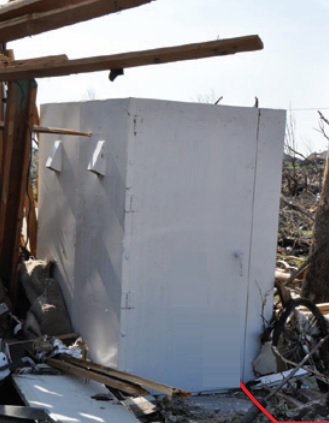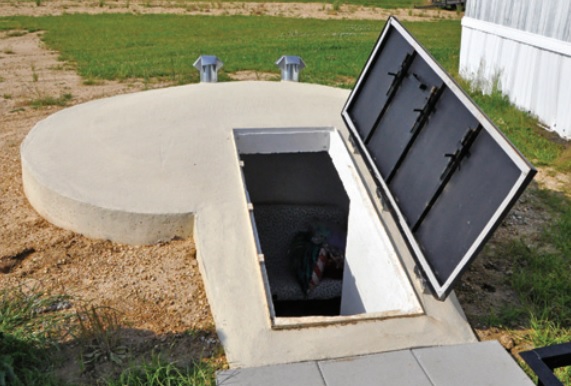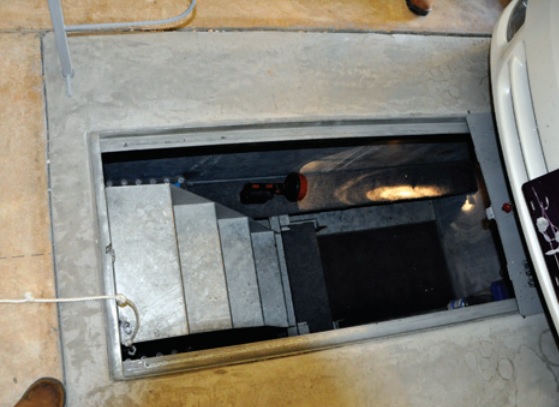Frequently Asked Questions:
A safe room is a hardened structure specifically designed to meet the Federal Emergency Management Agency (FEMA) criteria and provide near-absolute protection in extreme weather events, including tornadoes and hurricanes. Near-absolute protection means that, based on our current knowledge of tornadoes and hurricanes, the occupants of a safe room built in accordance with FEMA guidance will have a very high probability of being protected from injury or death. (FEMA)
What is a Residential safe room?
A safe room serving occupants of dwelling units and having an occupant load not exceeding
16 persons. (FEMA P320)
What is a Community safe room?
Any safe room not defined as a residential safe room. (FEMA P320)
What is the difference between a storm shelter and a safe room?
The simple truth is the term storm shelter was universally used in all publications
until FEMA 361 guidelines started the use of the terminology "safe room" to be defined
as providing "near absolute protection" from severe wind damage. The two terms are
truly interchangeable, but many people use the term "safe room" to denote a shelter
constructed within a building, and "storm shelter" to denote a shelter constructed
outside a building. Note: The NSSA was the first to set the standard of designing
tornado shelters for 250 mph wind speed, the current guideline set by FEMA 361.
(NSSA - http://nssa.cc/consumer-information)
Is it better to buy an above ground or below ground storm shelter/safe room?
Most early tornado shelters were below ground, like root cellars. This fact has ingrained
into our cultural perception that below ground shelters are better. Actually, it is
the engineering designs and materials that dictate the safety a shelter can provide.
A below ground shelter is only as good as the door securing it. Today, there are very
effective below and above ground shelters. Choosing the right design for your individual
needs and location are more important considerations.
(NSSA - http://nssa.cc/consumer-information)
What is a missile?
Test specimen used to simulate wind-borne debris. (FEMA P320)
What is Wind-borne debris?
Debris that is picked up by the wind and moved with enough force to damage and even
penetrate windows, doors, walls, and other parts of a building. In general, the stronger
the wind, the larger and heavier the debris it can carry and the greater the risk
of severe damage or injury. But even small stones, branches, and other lighter debris
can easily break glass doors and windows. (FEMA P320)
Example of Above-Ground Safe Room (Shelter):

Example of Below-Ground Shelter:

Example of In-Ground Shelter:

(pics from FEMA P-908 May 2012)
National Wind Institute
-
Address
1009 Canton Ave., MS 3155 Lubbock, TX 79409-3155 -
Phone
National Wind Institute - 806.742.3476; Renewable Energy - 806.742.6284 -
Email
National Wind Institute - nwi@ttu.edu; Renewable Energy - windenergy@ttu.edu
